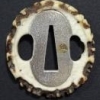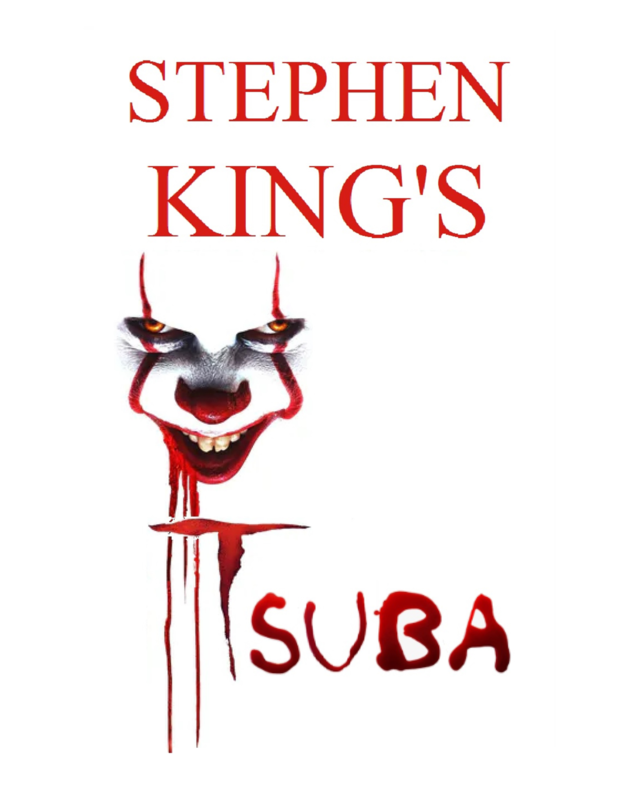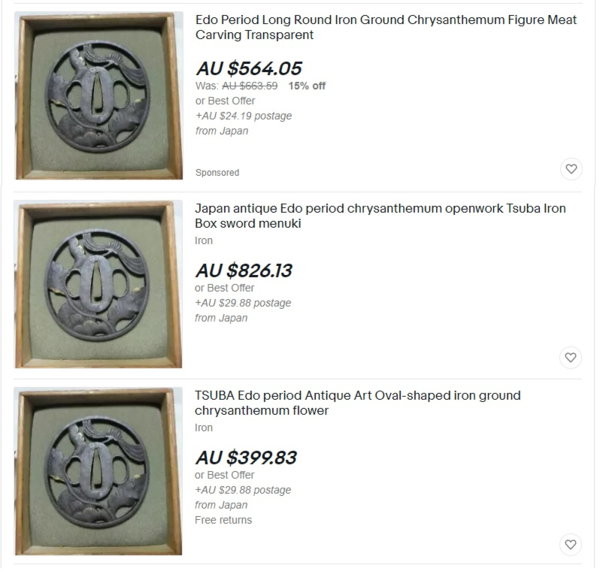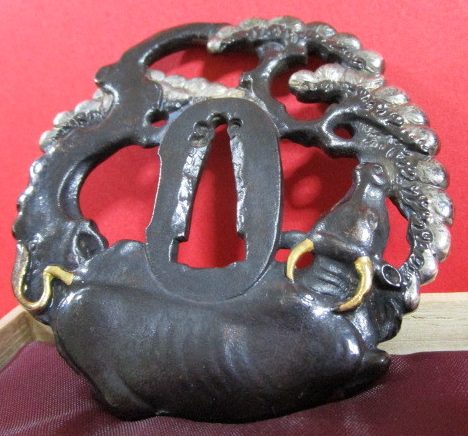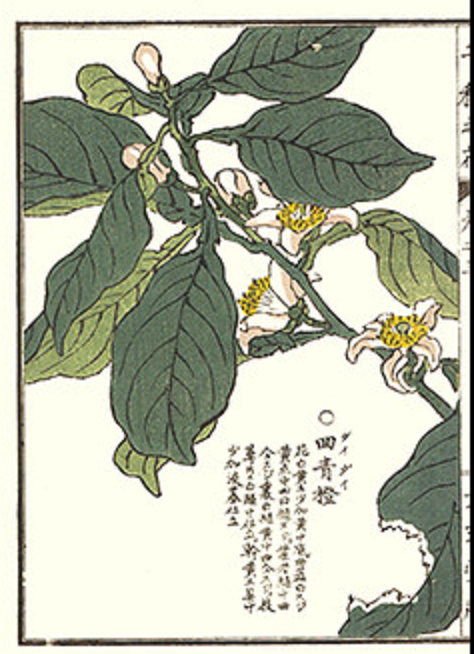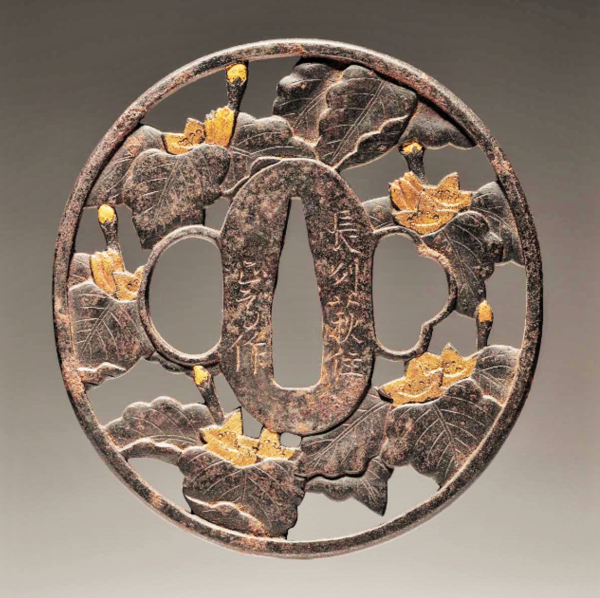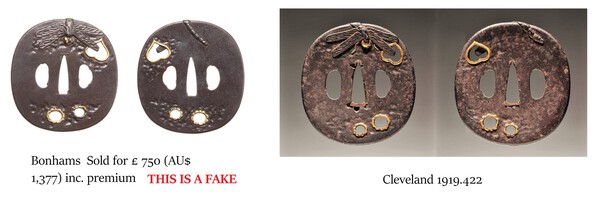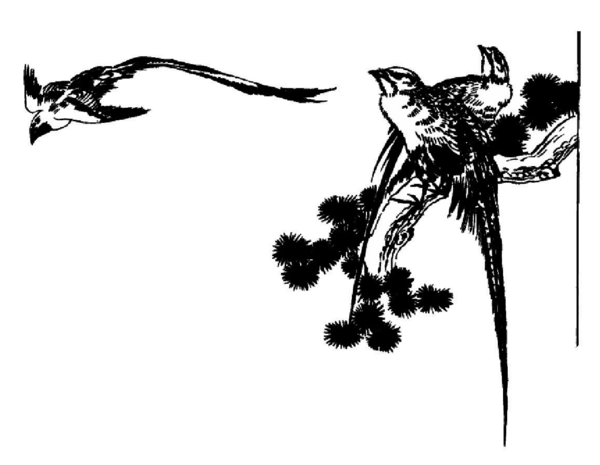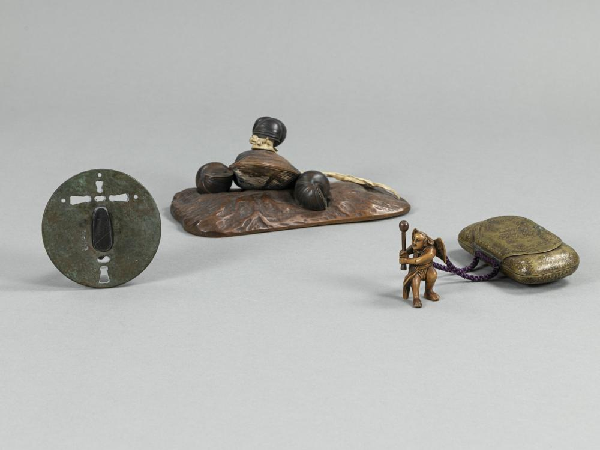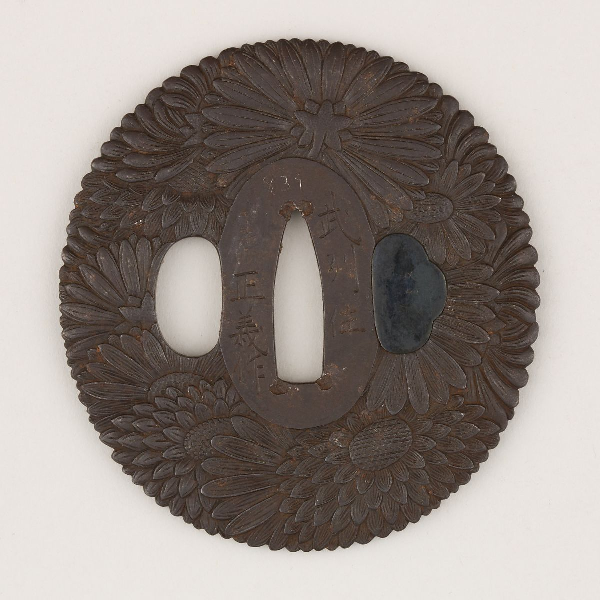-
Posts
3,403 -
Joined
-
Last visited
-
Days Won
89
Everything posted by Spartancrest
-
Well I did tell Stephen awhile ago he could do with a bit of a wow factor for his book cover - how about this! [Small children don't make up a big market in tsuba collecting do they?]
-
Thanks David, I was just wondering if I quoted a certificate number as a reference to a particular type or design of guard, if that could be used as an example people could look up, but if there is no general access to images on the certificates then the certificate number would not be of much help. I will have to find other examples from museums where stored images can be found by the general public. - it was a good idea that didn't work out.
-
This is like watching a tennis game -
-
I was just wondering if anyone knows if there is register of NBTHK certificate numbers? Also are duplicate certificates kept as references by NBTHK? It would be a great resource for study if available.
-
I can't decide which group either of these guards would fit? I know Onin were known for large inlays of precast bronze/brass elements, but to my eyes these are borderline. Onin were thinner plate? But I don't have access to the thickness of either guard. Any good guesses? Thanks.
-
What is going on with ebay? This guard is listed three times and with three different prices - and it is not the only example. https://www.ebay.com.au/itm/324643235985 https://www.ebay.com.au/itm/324444689023 https://www.ebay.com.au/itm/133721764429
-
Great job - I love to re-use things that can be useful in new ways - we humans are often so wasteful of wonderful objects that just need a little thought to have a second life. Thinking inside the box [rather than outside for a change] top marks Grev.
-
I think this one needs a little sanding to get rid of the gloss finish! https://www.jauce.com/auction/x785779529 that poor Ox must have slid off the seppa-dai, he needs to be put down, I hate to see animals suffer.
-
Thank you Chris, I wish it was one of mine, I am doing a book on the Cleveland Museum of Art and using it to show how some of the designs were developed and more or less it is for beginners in the field. There is some detailed information but it doesn't target the experts [who really shouldn't need it after all !] I am sure when it is finished there will be criticism that I didn't mention this or that about the examples, what amuses me is that when someone does that - they don't need that information to start with do they? They already know it! I don't want to bombard people with page after page of detailed descriptions most of which can be directly seen in the images - nor do I personally like a heap of Japanese terms that must be explained into English anyway, why make a subject more difficult to start with? If it was going to be a technical book, that only 'experts' would appreciate I can't see much point to it. I will get off my soap box now. I do wish to thank you and the other members for all their help - now and in the past.
-
Great Piers - you don't happen to know of a woodblock print I can use for a visual comparison in my book? I am adding where possible images that coincide with the tsuba themes, just a bit extra detail other books don't include. I have this one, I will use if I can't find a better likeness. Hold on a moment What about this Bitter Orange? it has the standing buds as well - I am beginning to think it is a total guessing game, I could do with my late father's expertise on horticulture - unfortunately it's not something he passed on to me [ just a dicky heart a bad back and baldness] Thank you all for the help.
-
Thank you Chris - Dog wood, they are showy and produce an edible fruit [cornus kousa chinensis] the Asian variety - For our American friends do not eat the Florida plant it is poisonous! The fruit look like either Lychee or Irish Strawberry tree fruit (Arbutus Unedo). https://www.tyrantfarms.com/introducing-kousa-dogwood-cornus-kousa-the-edible-dogwood/
-
Thank you both, I had a look at Kiri /Paulownia the leaves in the photo are similar, I found a woodblock print of a Paulownia tree but the guard would need to use a very stylized design of the flowers [which is possible] You can tell the print was very small and blurry when enlarged.
-
Has anyone got any idea what plant this tsuba represents? Not Chrysanthemum or Peony. It is by 'Masataka' of Hagi. Thank you for any ideas.
-
It would not be so bad if they were marketed as 'replicas' [and priced that way] and these are not utsushi which would be a compliment to the original, these are deliberate fakes meant to deceive. It is a very interesting hobby isn't it !
-
Hi Yas I have just been doing some research on a book I am about to publish on the Cleveland Museum of Art tsuba collection, and I came across this auction from 2012 https://www.bonhams.com/auctions/20190/lot/10/?category=list&length=12&page=1 There is a guard that is almost identical to the Bonhams auction one in the Cleveland Museum [number 1919.422] The only real difference is the Bonhams is a total fake! Zoom in on the hitsu-ana and it is a dead set giveaway. I feel sorry for the person who paid so much, I have a theory that many of these fakes are copied directly from museum collections on-line, in some cases the museums only show the omote side and the forgeries have to resort to a made up design on the ura.
-
It could have started out as an ordinary tsuba with a flush rather than raised seppa-dai from my experiment with the image - still doesn't explain why it was done? The same auction house has https://www.drouotonline.com/l/15270086-japon-tsuba-bronze---boucle-en The 'bronze' tsuba is a steel bottle opener from the 1960s
-
You will notice the clock example completely covers the seppa-dai area of the guard - however in this case the hole is round and not oval.
-
Uwe here are some images taken from "A Grammar of Japanese Ornament" by Thomas W. Cutler [LONDON: B. T. BATSFORD 1880] The birds are not exactly the same but a similar theme.
-
Has anyone got a copy of TSUBA MEI SAKU SHU by NBTHK: Honma Kunzan & Sato Kanzan? I have a copy of the 1963 edition and have noticed two pages 246 & 248 are blank and thus missing descriptions. Is this a print run error for all that edition? If someone has an edition where they have descriptions could they show a copy of the pages so I could insert into my edition. Many thanks
-
I agree with Grev it looks much improved, the scratches on the ategane on the ura are a pity but you would need to polish them out to stop the refracted light but I think that is drastic and should only be done by a professional [leave the wrinkles they show its had a life] Barry is right about his tsuba fussing - cotton jeans with cotton pockets and a lot of rubbing but as he says not with inlays. [you might end up with strange indents in your butt when you sit down as well ]
-
Also running on Jauce - with their usual selection of fees! https://www.jauce.com/auction/d519528671 Yum that popcorn looks good!
-
Ron. What I notice about this guard, is trace evidence of once having a fukurin from the corrosion line following the rim outline. Monkey tumbler motif at the top? Nice unusual guard. The repair sekigane/ategane means it was treasured by it's original owners. Sorry I can't hazard a guess at the school.
-
Updating the auction of the not - 'Kanshiro' - it sold with 66 bids for ¥ 501,000 or roughly $4,500 US, with fees probably closer to $5,000 US. Which only makes me smile when I think how much I paid for mine - utsushi or not.
-
We have discussed commemorative paperweights before [ like that below ] but one has turned up in a combined auction. https://www.invaluable.com/auction-lot/a-carved-wood-okimono-with-shells-a-tsuba-and-a-b-952-c-6ea45478c8 I think this is how some tsuba copies get confused with what they start out as, this auction does not mention the storage box that would have come with the paperweight, so that subsequent owners have no reference to what they really have. I am not criticizing the estimates by the auction house in this case, the okimono alone may be worth the estimate, but there is a lack of relevant provenance on the tsuba paperweight.
-
One in the Met says Bushu. Masayoshi (正義), first name Sadashichi (定七), was an Edo-based artist active at the end of the 18th century who had studied with the Masakata (正方, ?-1774), the third master of the local Bushū-Itō (武州伊藤) School. https://www.metmuseum.org/art/collection/search/25746 Just going by the star shape flower head [top of the seppa-dai] they look darn close to me. Bushu x 2?


